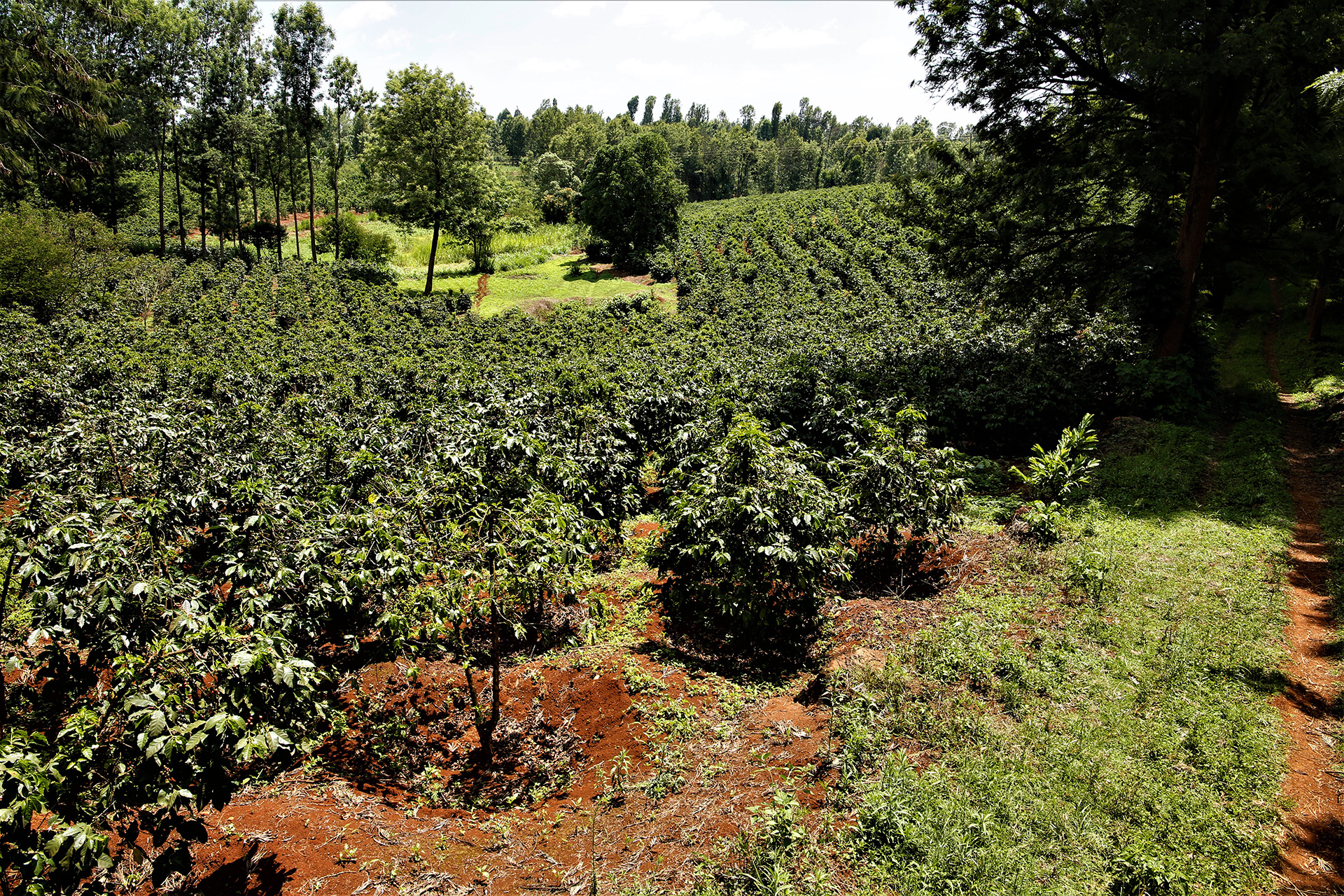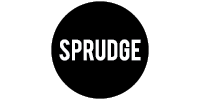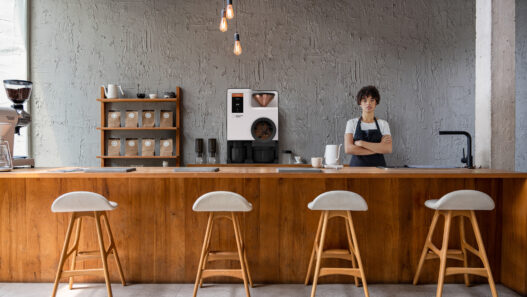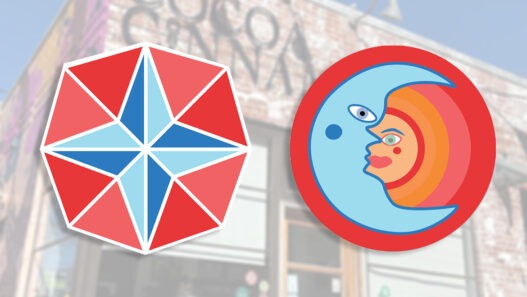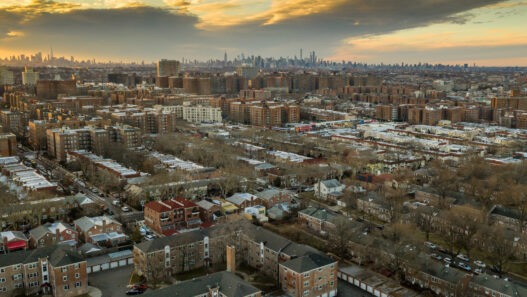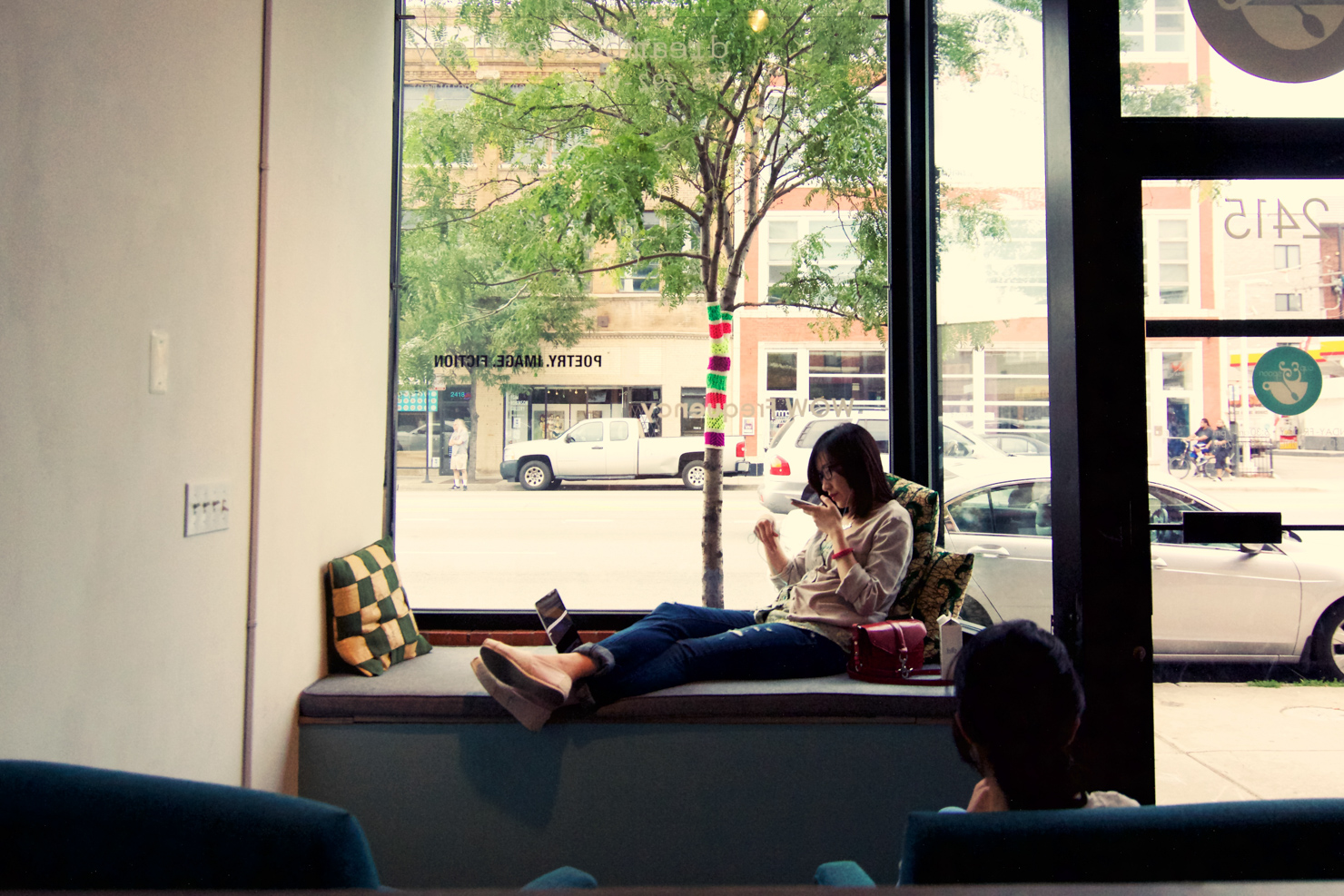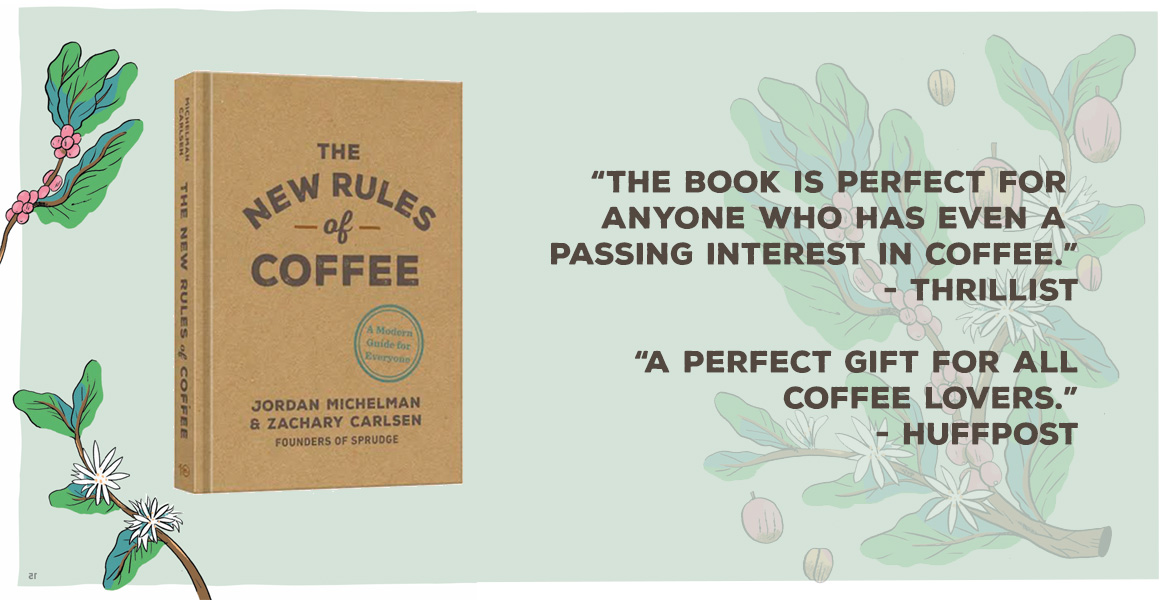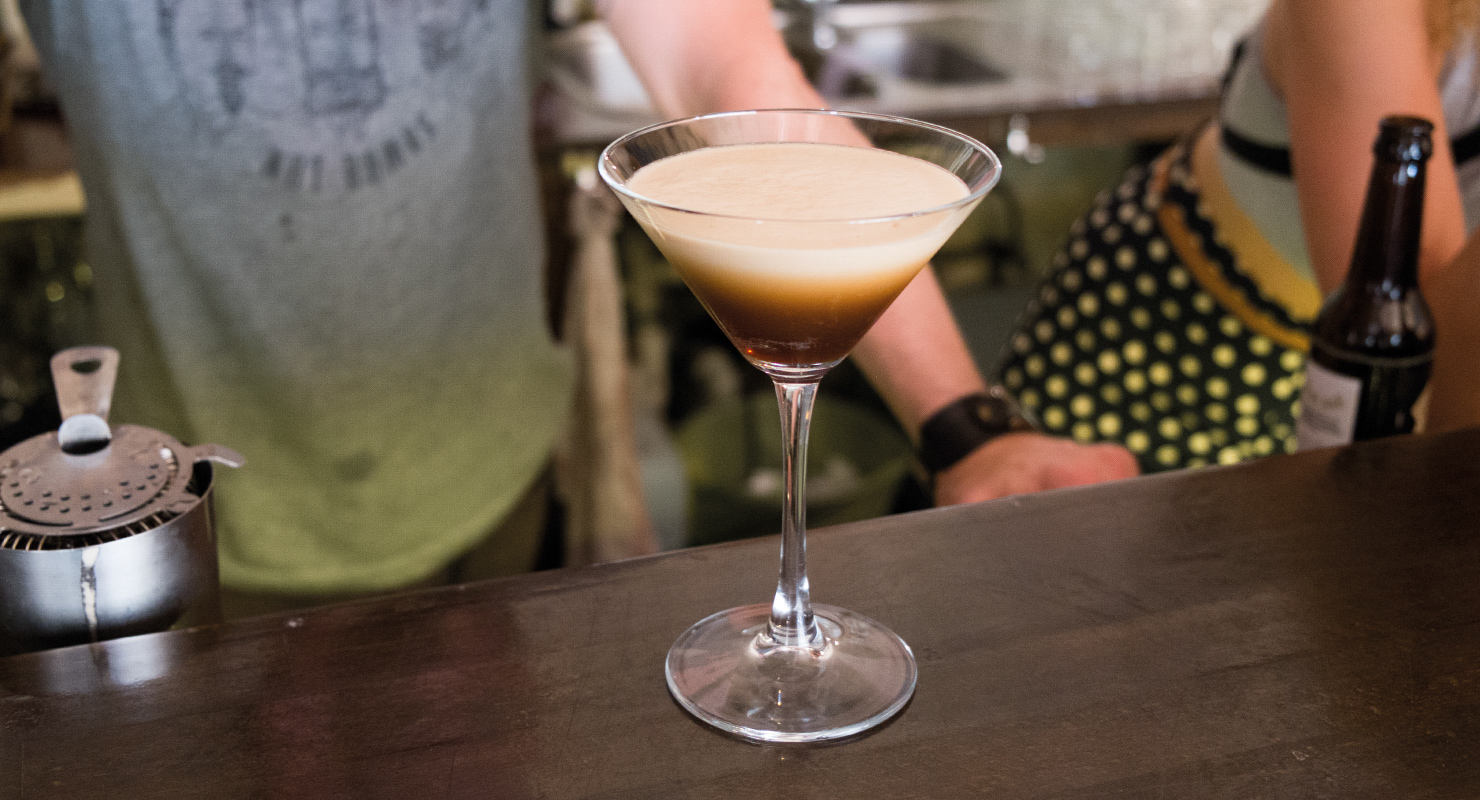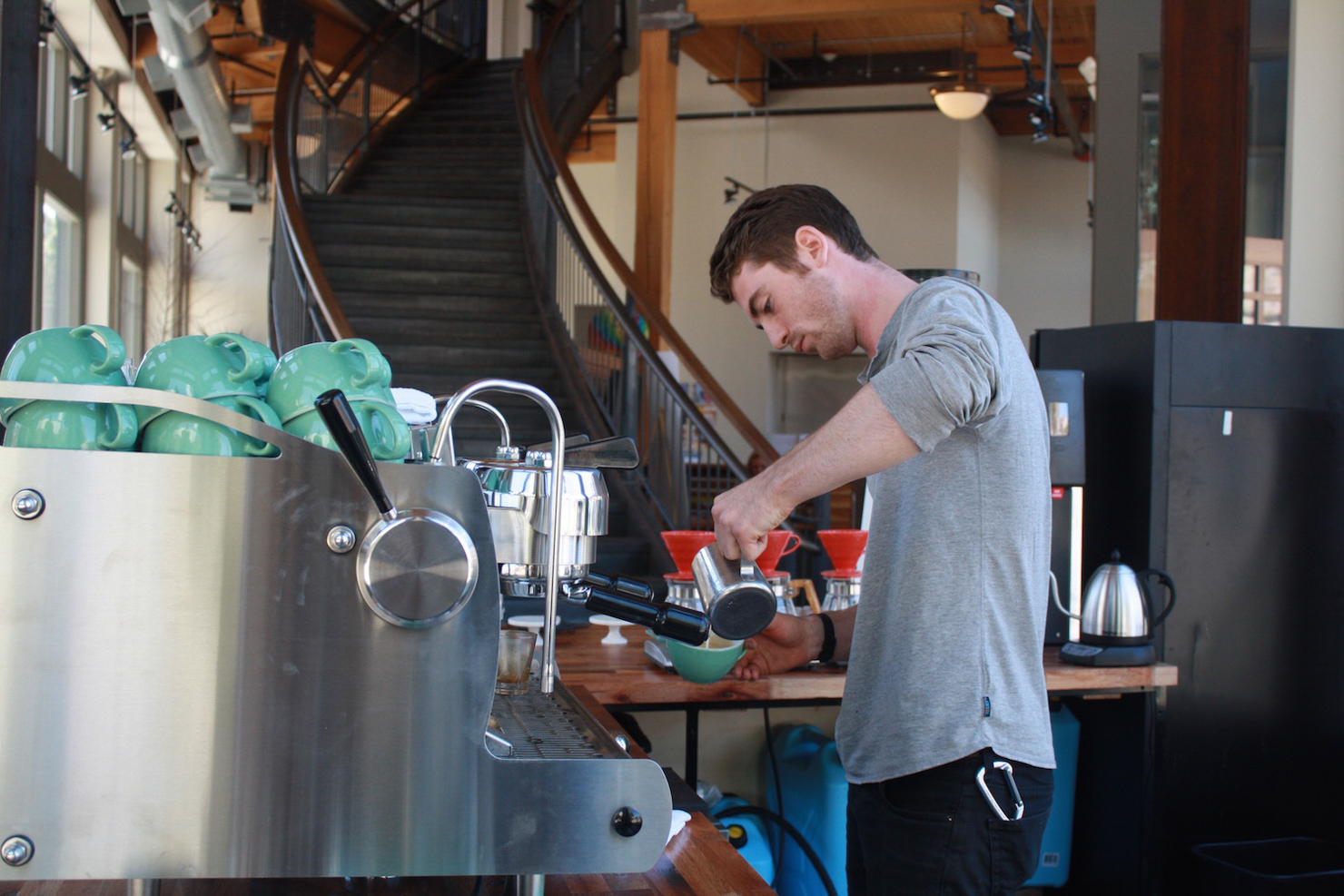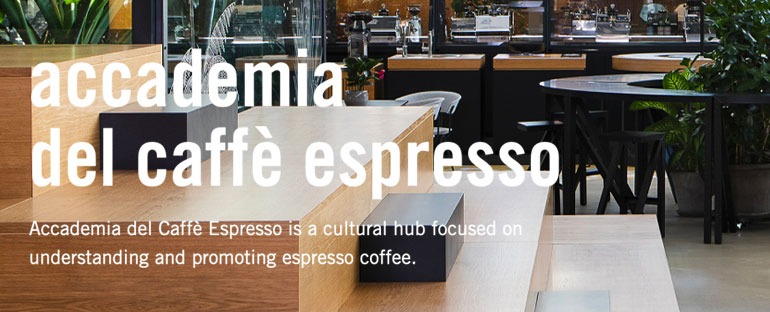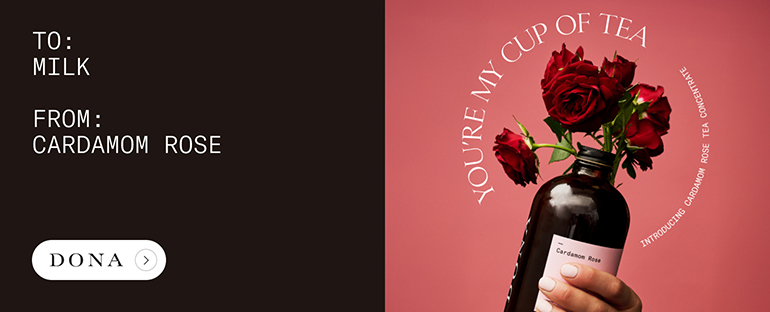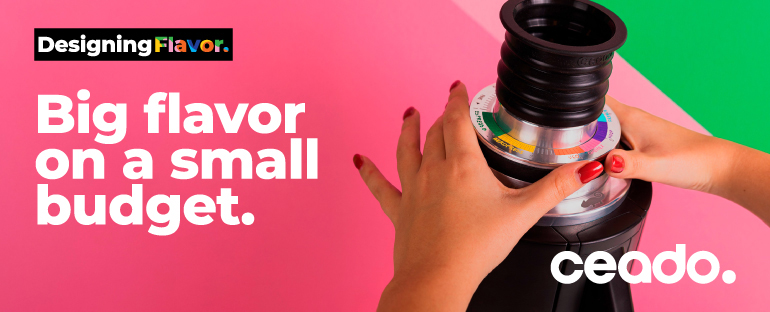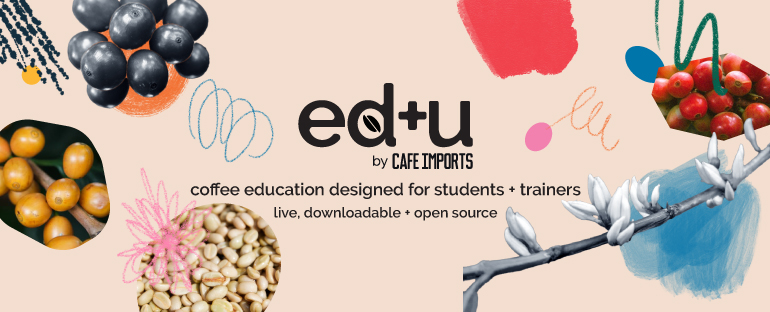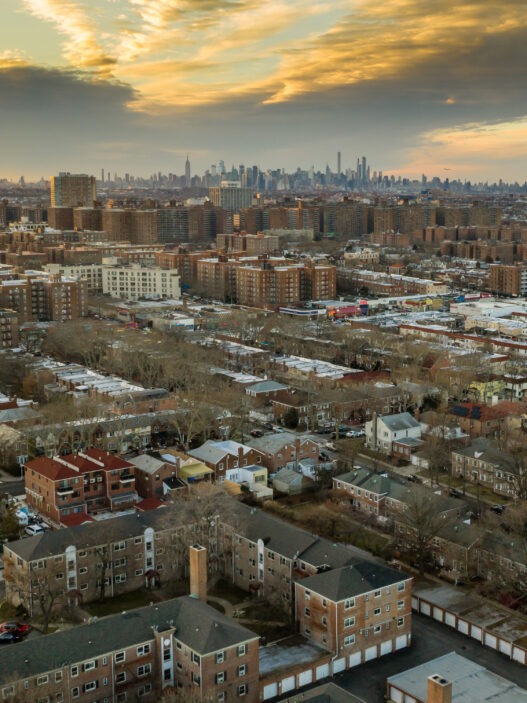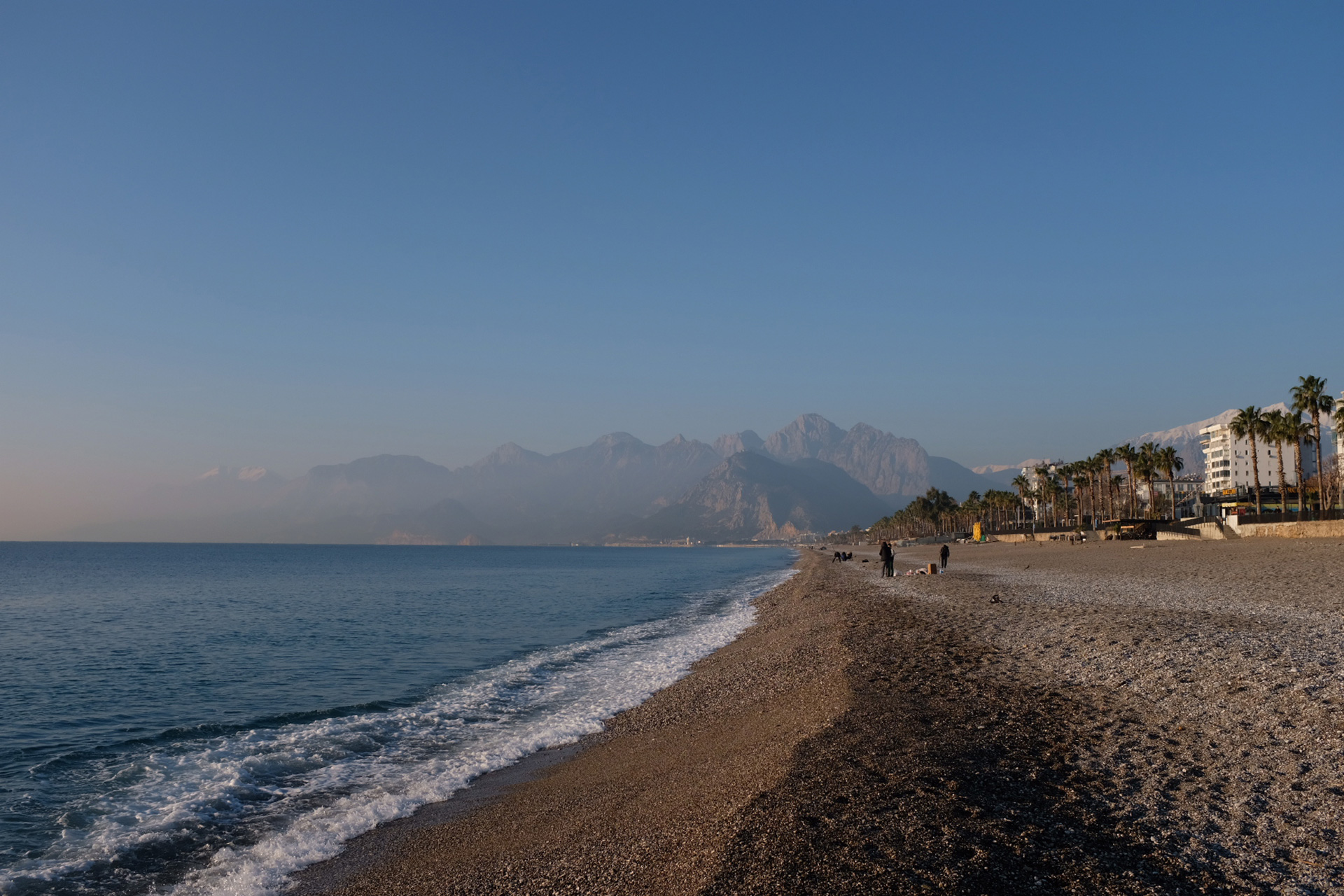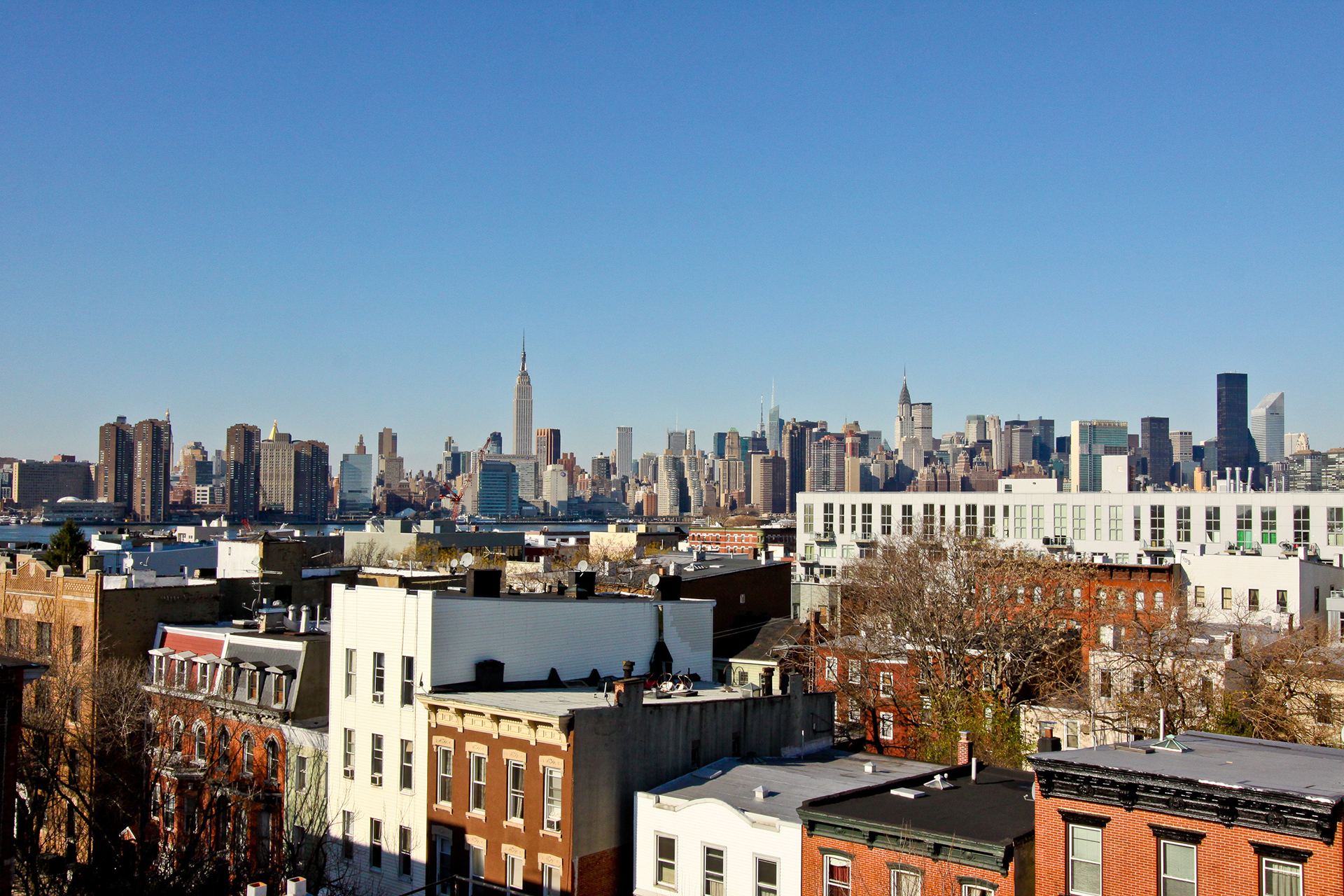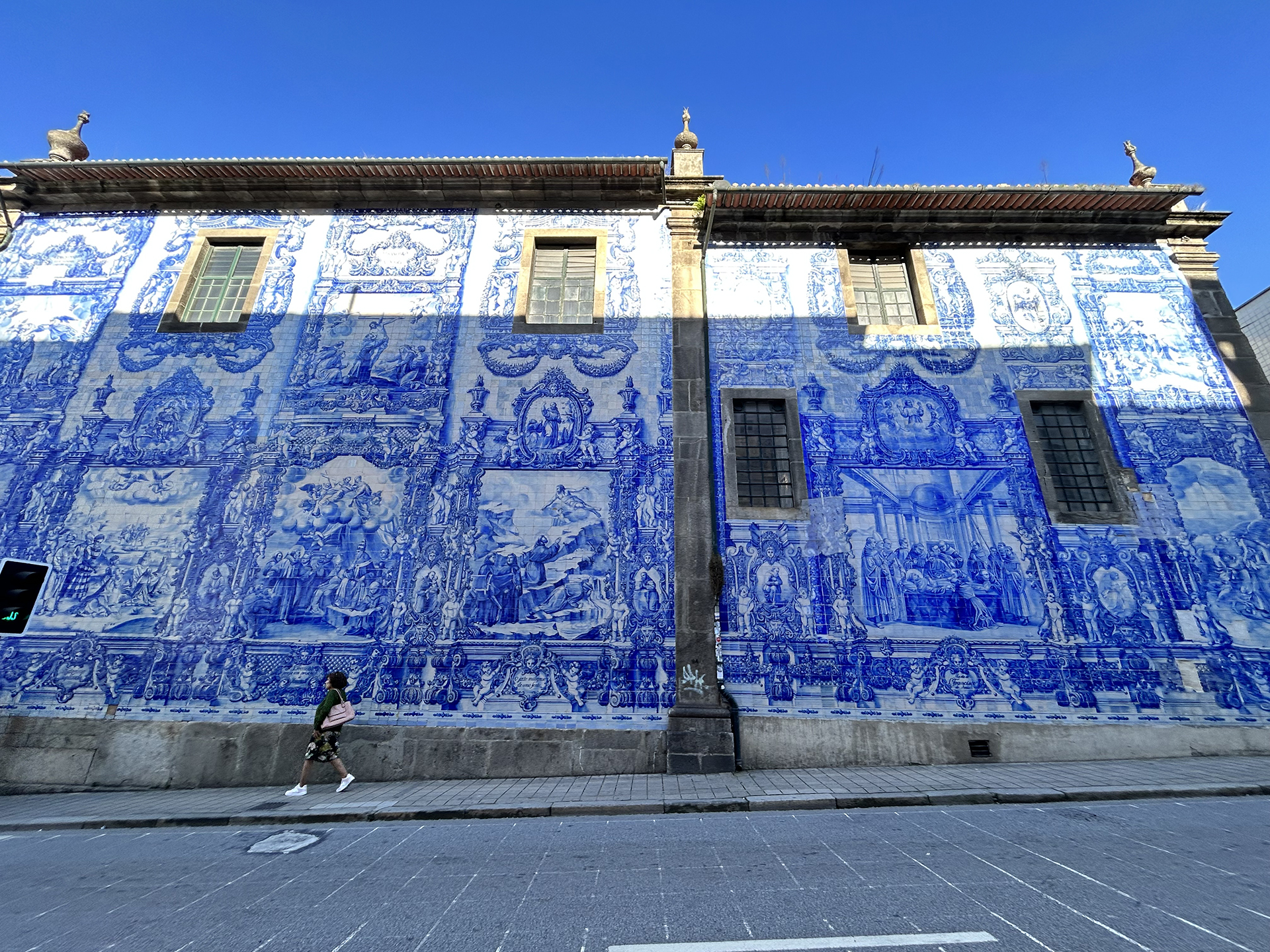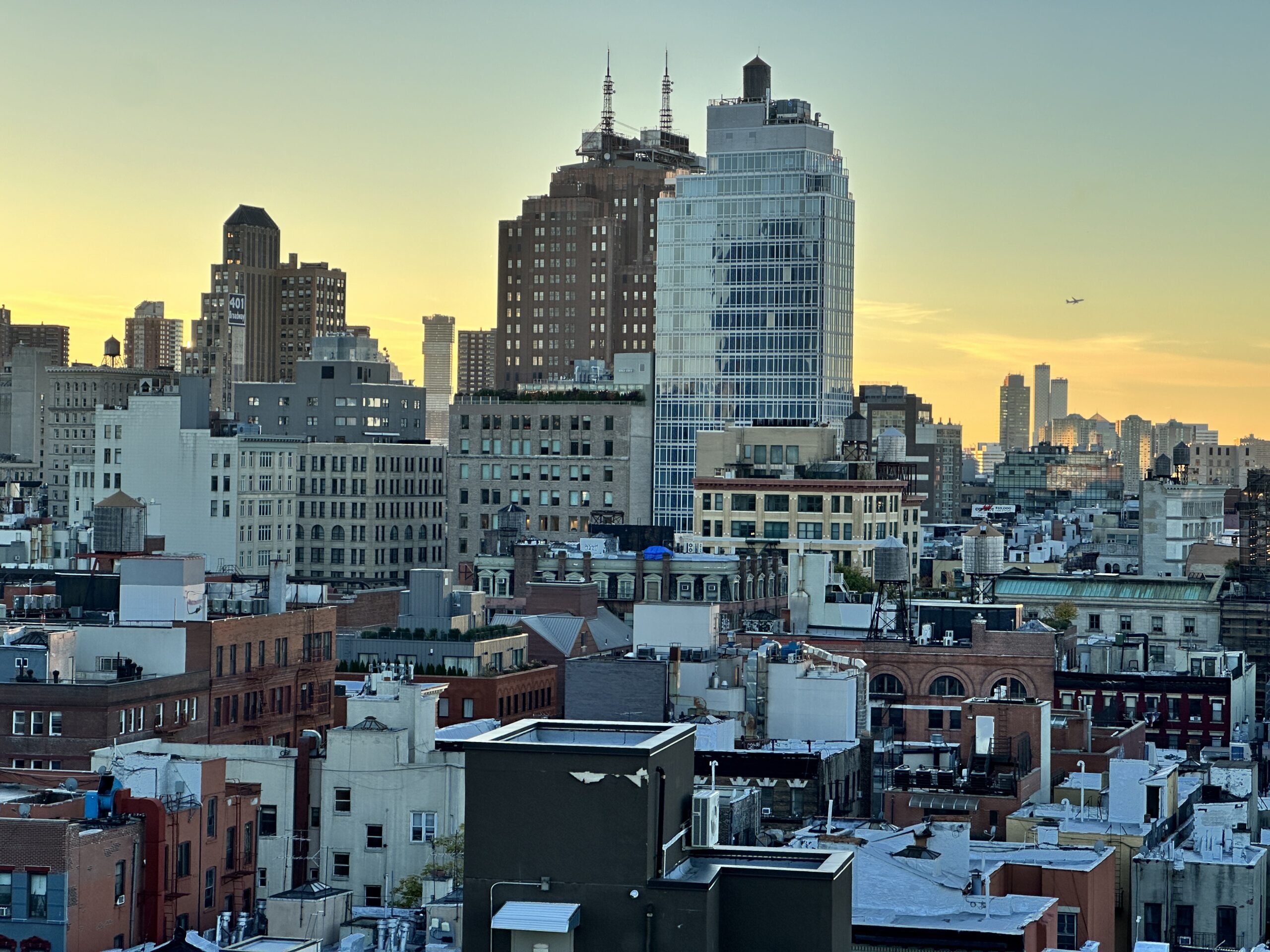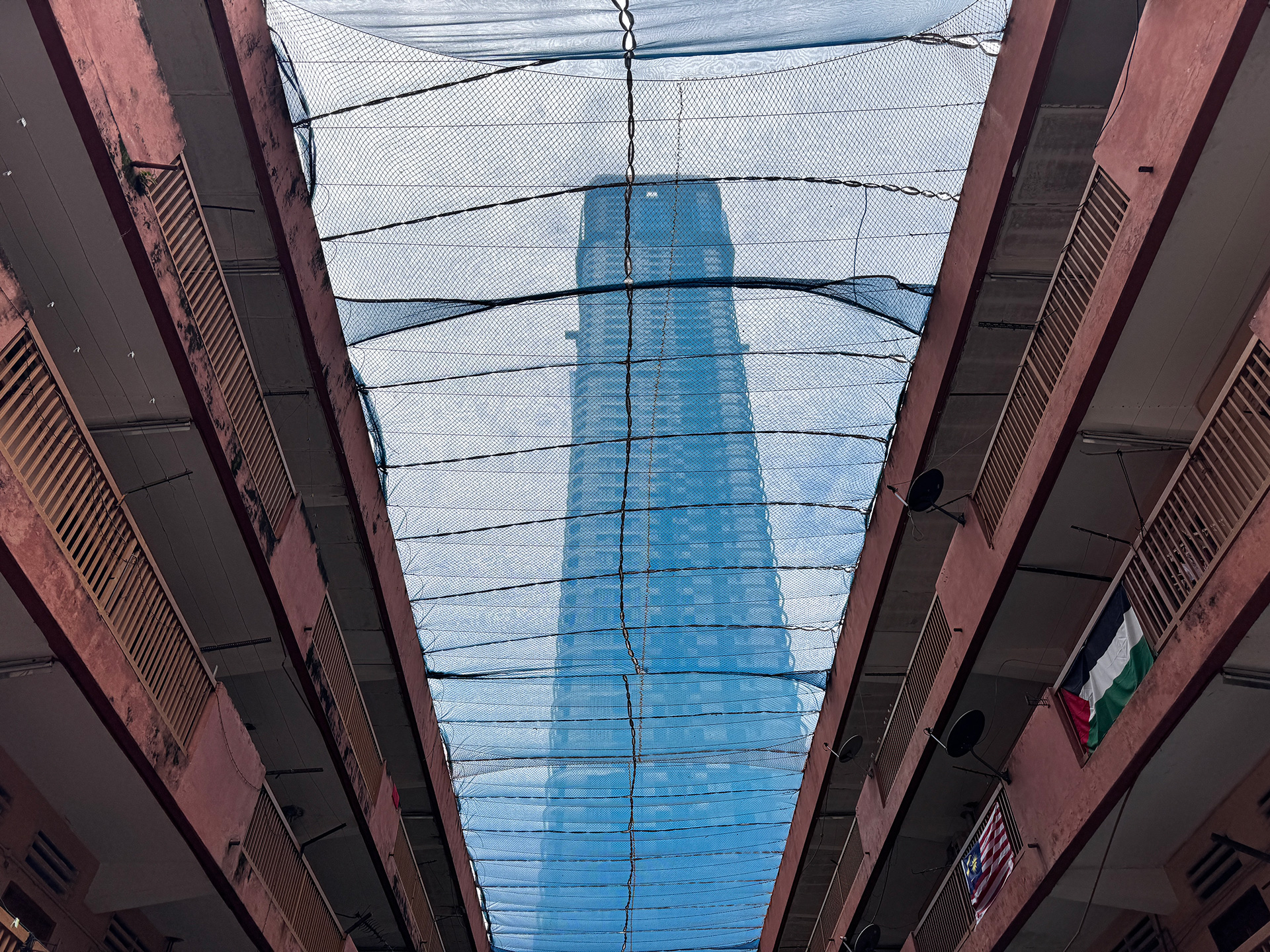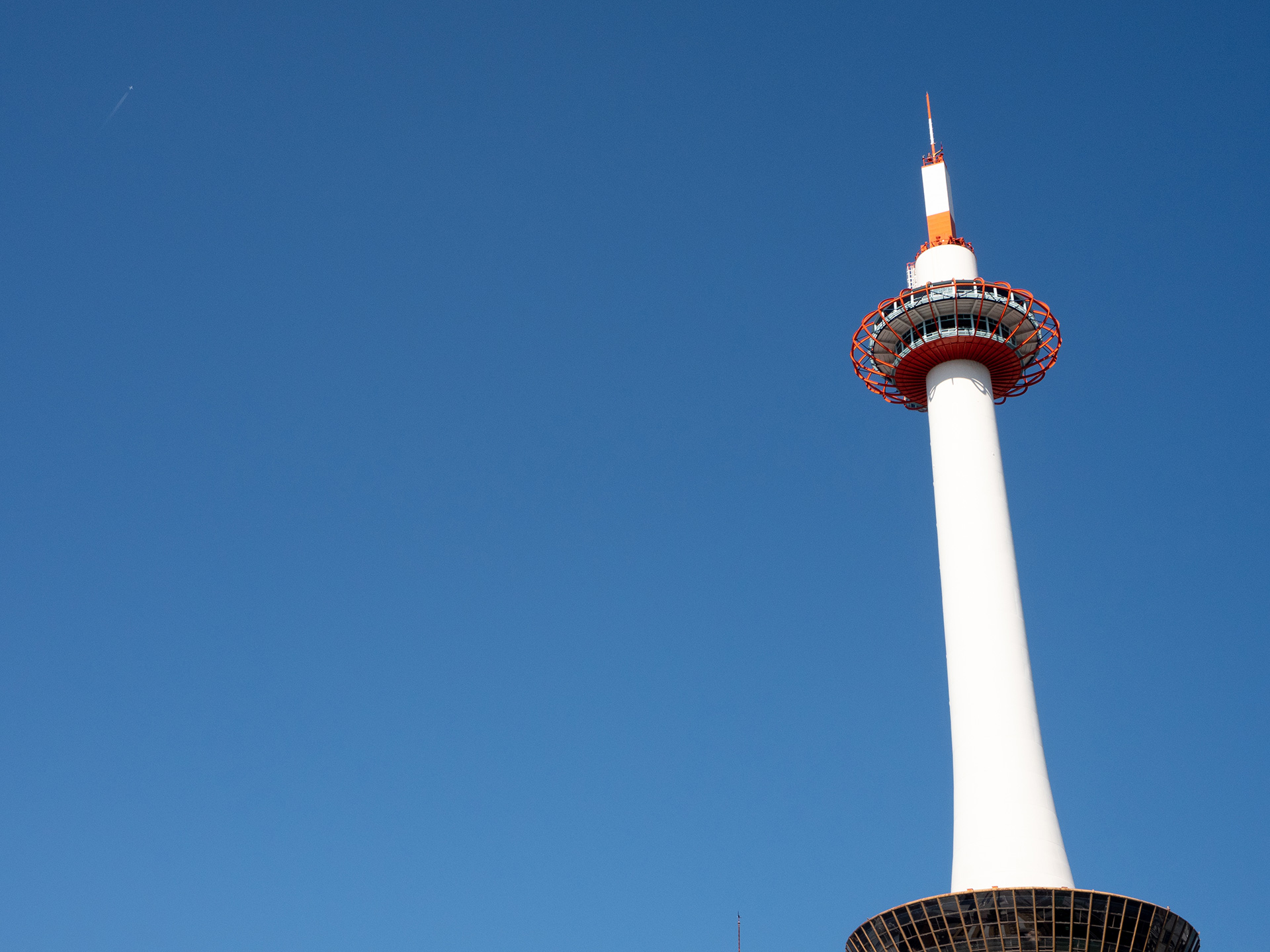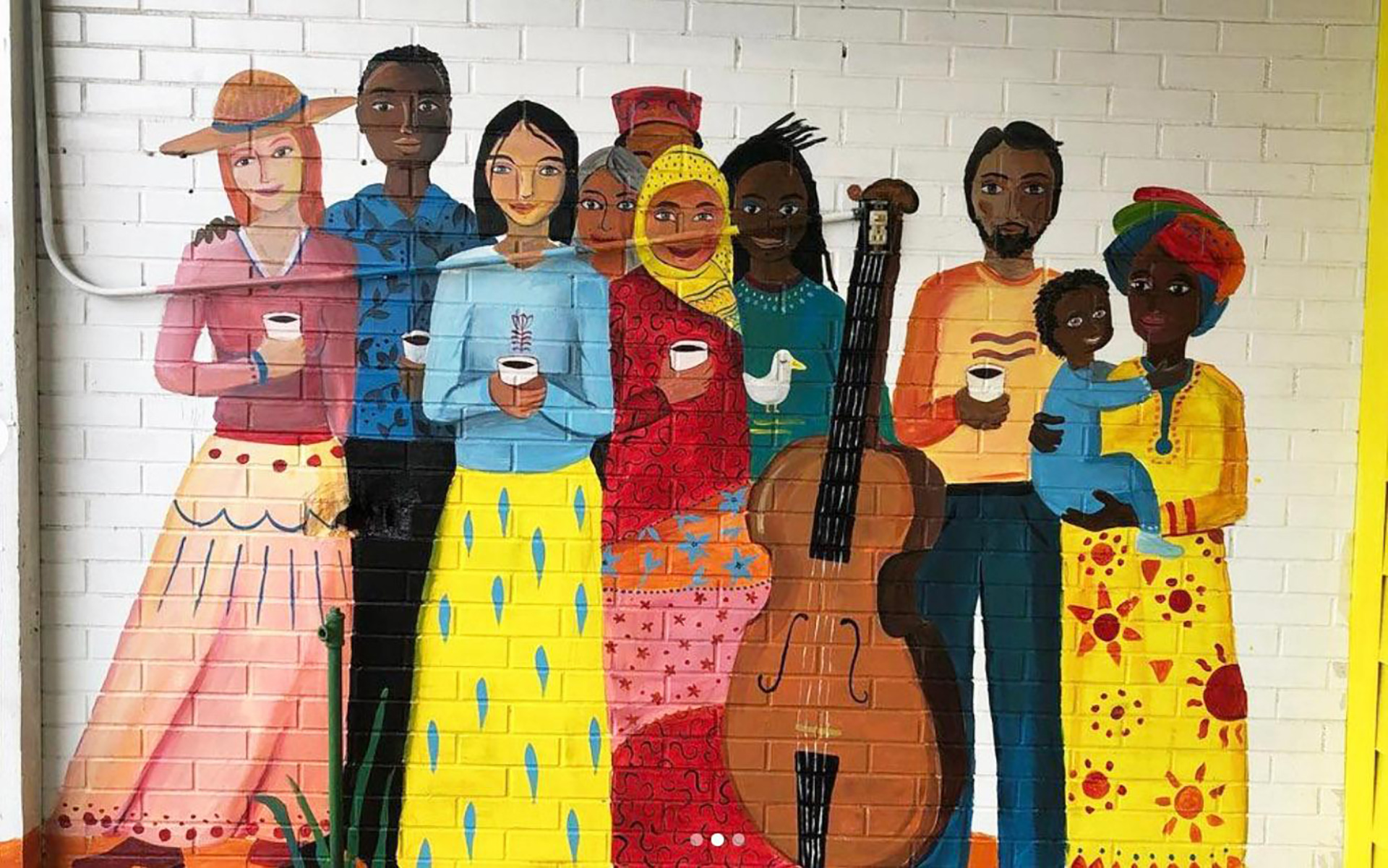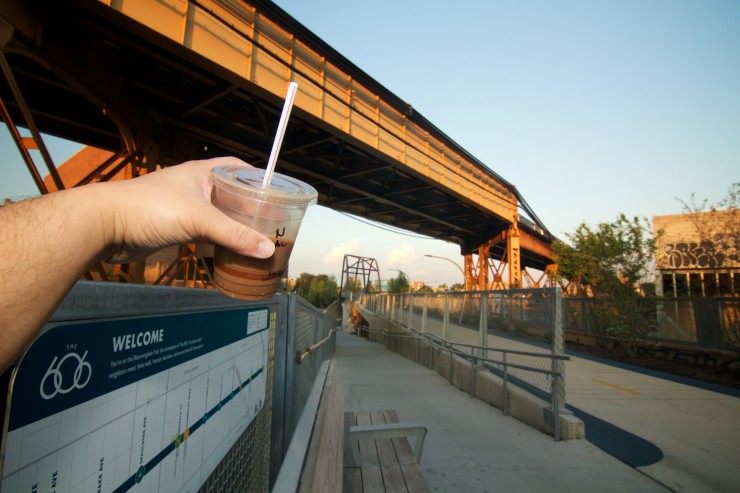
Named for the first three digits of every Chicago zip code, The 606 is a string of Chicago parks connected by the old elevated Bloomingdale railway line. Opened on July 6th, the 2.7-mile continuous park, also known as the Bloomingdale Trail, was welcomed by Chicago’s walkers, runners, and cyclists—but raised an important question for many:
Where should I grab coffee on my way to the park?
To address the problem, I took on the responsibility of identifying and visiting any specialty coffee spot within a few minutes’ walking distance of the trail. Here’s a map to the 606, and please consider this guide as a kind of caffeinated supplement to what I hope will be your pleasantly lazy afternoon in the park.
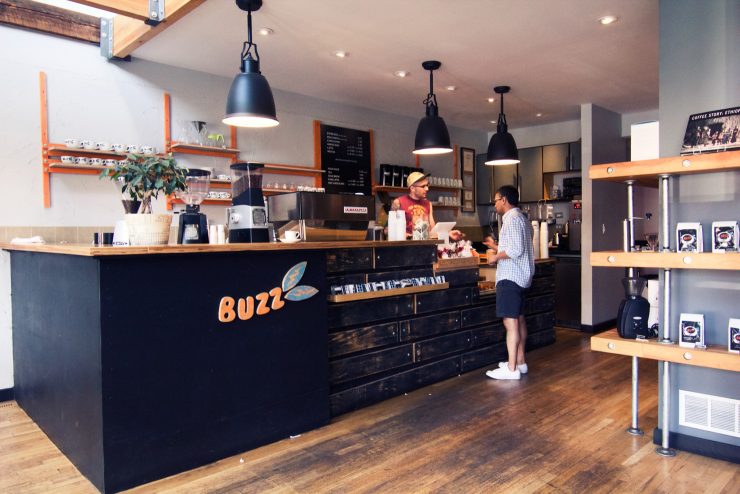
Buzz Killer Espresso
Damen Avenue/Churchill Park Access Point
First stop is Buzz Killer Espresso. Over the past five years, Buzz has expanded its space dramatically, and the coffee’s kept pace: Buzz originally used multiple roasters’ beans, but three years ago made the switch to using their own, roasted on a Samiac. Entering the café, the space opens up to a high vaulted ceiling with plenty of warm wood accents and tons of natural light coming in from both the skylights and a large set of windows in front. The narrow bar directly in front of the windows is easily my favorite spot; on warm days, they’ll swing the windows open, and since the main floor of the café is elevated slightly above street level, you’re offered a prime vantage point for people-watching. It’s easy to get lost in thought looking out onto the passing crowds of Wicker Park while drinking your espresso.
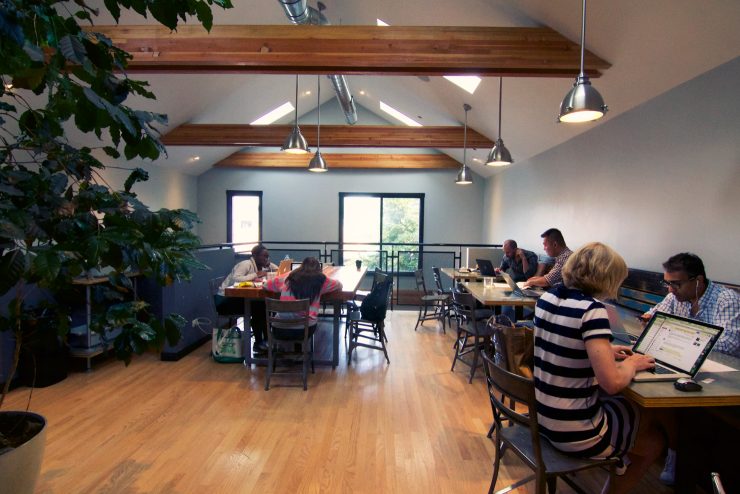 The back of the main floor is carved out into small, private tables, with power outlets near each seat. In one of the corners, you’ll find a small homage to some great roasters out west: there are framed photos of Novo Coffee, Heart, Coava, and others. Upstairs is an airy, open loft space with a large shared table under a series of skylights. Drinking your coffee at either the window bar or while standing at the barista serving area is common, though you can get almost any drink in a to-go cup to take back along your stroll on the 606.
The back of the main floor is carved out into small, private tables, with power outlets near each seat. In one of the corners, you’ll find a small homage to some great roasters out west: there are framed photos of Novo Coffee, Heart, Coava, and others. Upstairs is an airy, open loft space with a large shared table under a series of skylights. Drinking your coffee at either the window bar or while standing at the barista serving area is common, though you can get almost any drink in a to-go cup to take back along your stroll on the 606.
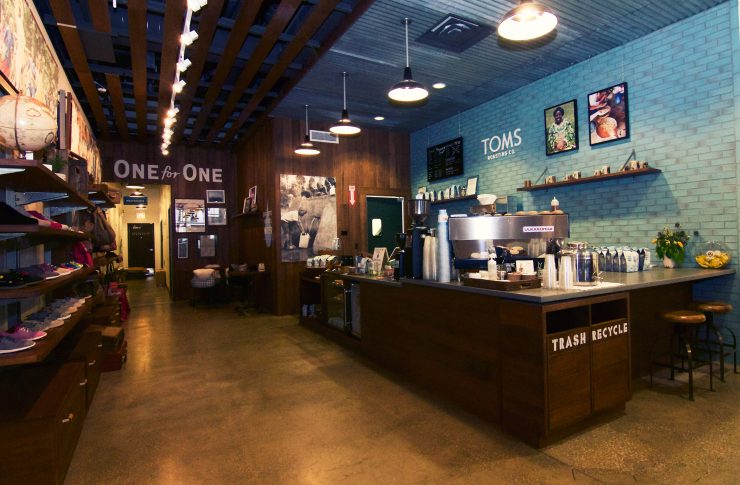 TOMS Chicago
TOMS ChicagoDamen Avenue/Churchill Park Access Point
Taking advantage of the fact that Wicker Park’s traffic is usually at a standstill, I dart across the street and drop into TOMS. “A lot of people are still wrapping their heads around the idea that TOMS has coffee,” says barista Lauren De Nooy of the roaster’s longstanding reputation as a wearables brand. “But we’ve had had a coffee program for about 15 months now.” The room, full of mixed warm and cool tones, is decidedly less homey than your average cafe, but then again, you can also pick up a pair of shoes.
It may seem odd to combine shoe retail with coffee, but there’s a full coffee bar here, opposite the shoe wall, from espresso to pour-overs, as well as a 14-hour cold brew. Roasts default toward the darker end of the scale, but it’s by no means the rule. What interested me most is how TOMS’ “One For One” retail program extends to their coffee. All TOMS products have one for one components; buying a pair of shoes or eyeglasses for yourself also supplies a child in need of shoes, or a person in need of eyewear or treatment. For coffee, each cup of TOMS provides one day of safe water, a 12-ounce bag provides 140 liters (about a week’s worth), and so on.
“We give water to the communities we source our beans from, so everything goes full circle,” De Nooy says. “Not only are we buying the beans from them, the water they source comes from the wells we help build.”
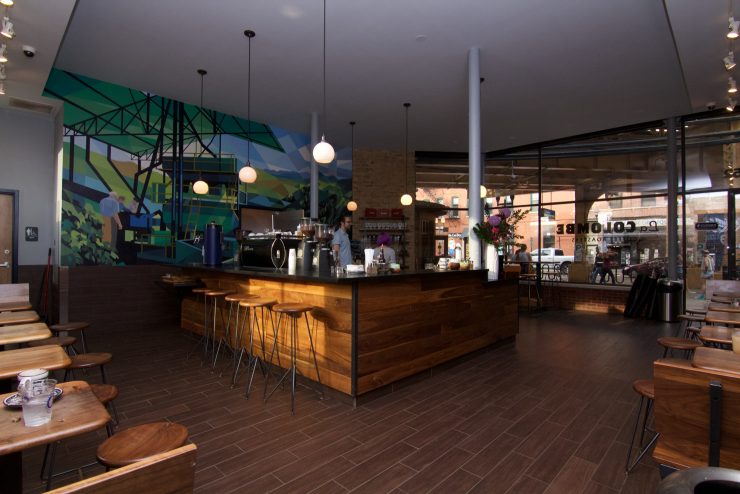 La Colombe
La ColombeDamen Avenue/Churchill Park Access Point
Just south of TOMS, past the dense three-way intersection of North/Damen/Milwaukee and almost directly underneath a CTA Blue Line stop is La Colombe. Inside, a central serving area is surrounded by plenty of open space. A large table sits in the window, smaller square tables dot the edges, big enough for one person to use a laptop or read a book—though La Colombe is a well-known anti-WiFi stalwart; they’d prefer you chatting with a friend over that tabletop.
All the beans in their Workshop line (single origins/varieties) are roasted locally in Logan Square on a 12-kilo Diedrich, while the more traditional/darker Reserve and Classic lines come from their central roasting facility. An old-school fridge contains their Pure Black bottled cold brew: a 16-hour brew process steeped inside wine tanks, filtered twice, then bottled. “In the near future, we’re actually going to offer it on tap along with our latte on draft, which is cold brew and milk incorporated together, along with introduced nitrogen to give it a nice foam head,” says barista Brian Ensminger. A chalkboard on the wall lists current offerings, and I’m excited to see there’s an interesting Panama coffee listed: the Esmeralda Bouquete Geisha.
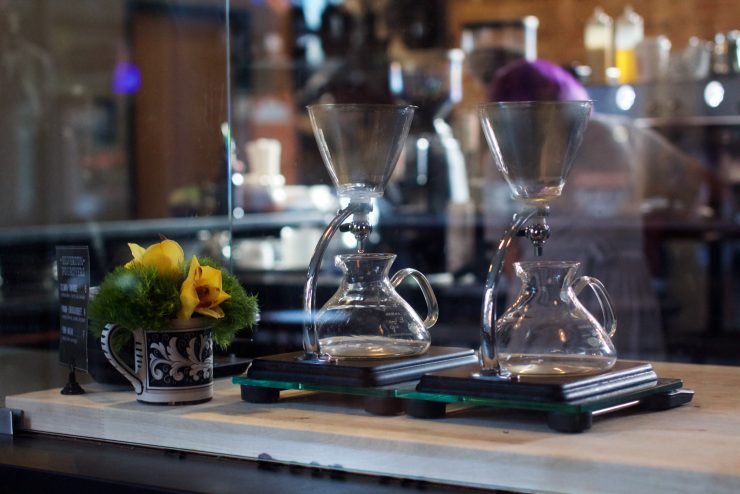 While waiting for it to brew, I grab some sparkling water from the self-service tap at the end of the bar. A few months ago, the Alpha Dominche Steampunk built into the bar was replaced with a set of Silverton immersion brewers, and I watch as my coffee is prepared in the beautiful glassware. To improve clarity, the Silverton mesh filter is augmented with an additional paper filter, resulting in a full-immersion brew that’s very clean in the cup. The Esmeralda smells mildly of blueberries. Above, I hear a train rumble through.
While waiting for it to brew, I grab some sparkling water from the self-service tap at the end of the bar. A few months ago, the Alpha Dominche Steampunk built into the bar was replaced with a set of Silverton immersion brewers, and I watch as my coffee is prepared in the beautiful glassware. To improve clarity, the Silverton mesh filter is augmented with an additional paper filter, resulting in a full-immersion brew that’s very clean in the cup. The Esmeralda smells mildly of blueberries. Above, I hear a train rumble through.
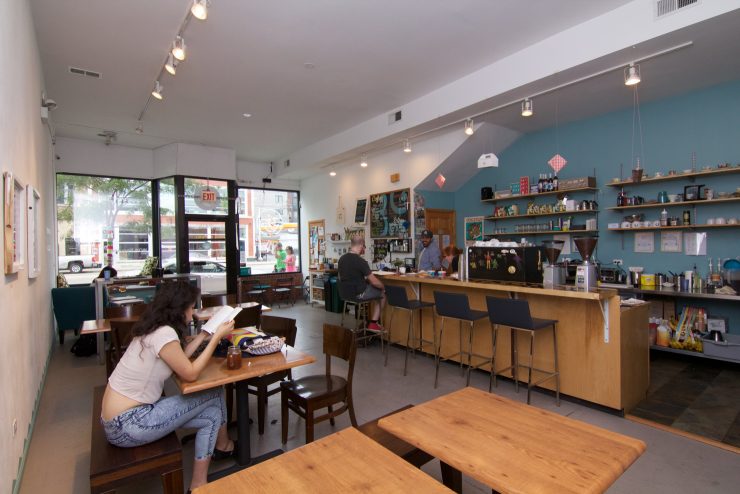
Cup & Spoon
Western Avenue Access Point
Jumping back onto The 606, I head west and exit at Western Avenue. A few blocks south is Cup & Spoon. “From a very young age, I’ve always wanted to own a café,” says Rosie Quasarano, owner. “We would go to food fests and farmers’ markets, set up for a day, then fade away into the night.”
About a year and a half ago, she decided to go full on brick and mortar, and buoyed by a successful crowdfunding campaign, she opened the current Cup & Spoon location. The café itself walks the line between lounge-y, comfortable neighborhood spot—there’s the community cork board, a shelf of board games and random books, cushioned window seating—and a mod space, with white walls, clean lines, and track lighting. The latter plays into their secondary function: a focus on the creative arts.
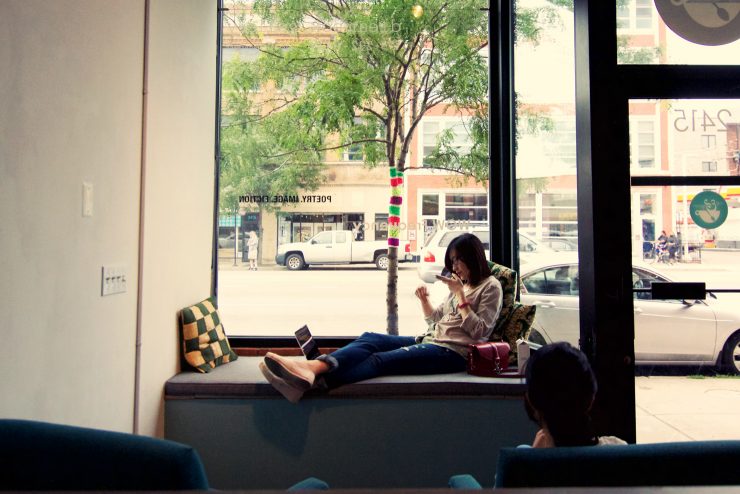 “Our motto is Coffee, Community, and Art,” Quasarano says. A section of the space is shared with Dreambox Gallery, used for poetry performances. “We do a lot of work with open mic nights and spoken word, and specific artist showcases are done with Dreambox,” she says. Quasarano wanted to stay local, and has used Metropolis stretching all the way back to her pop-up days.
“Our motto is Coffee, Community, and Art,” Quasarano says. A section of the space is shared with Dreambox Gallery, used for poetry performances. “We do a lot of work with open mic nights and spoken word, and specific artist showcases are done with Dreambox,” she says. Quasarano wanted to stay local, and has used Metropolis stretching all the way back to her pop-up days.
“Down the road I’d like to roast our own, and sourcing our own beans would be huge,” she says. Quasarano also brings in guest roasters such as Quasar Coffee to mix things up, and has put effort into creating a distinct line of specialty drinks like the Lumberjack Latte, which combines espresso, maple flavors from local artisan syrup supplier Jo Snow, and a tiny bit of sea salt to give it a little tweak of savory that I couldn’t drink fast enough.
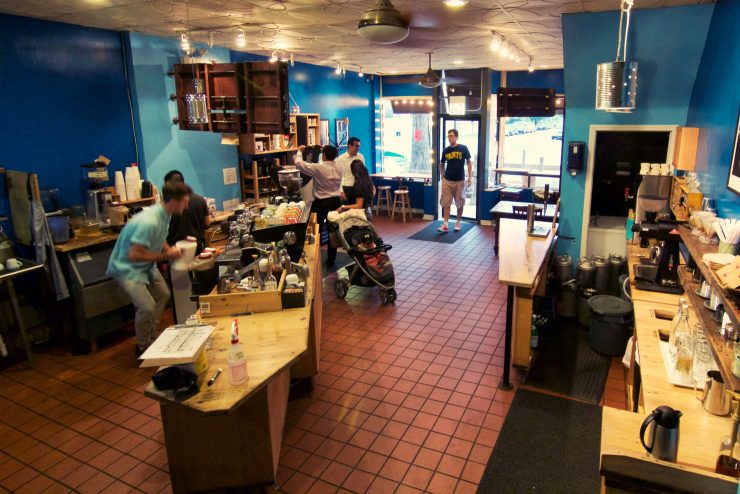
Ipsento
Western Avenue Access Point
Walking back to The 606 and then a few blocks north of it, I came to Ipsento, one of the earlier cafés to embrace specialty coffee in Chicago. The initial foray was a bit uneven. “Originally, a church bought it to primarily focus on using it as a local community space,” says manager Harris Nash of the space Ipsento occupies. It didn’t fit their goals, so Tim Taylor, who had been using the location to roast his own beans, bought it. Shortly thereafter, Ipsento went into high gear, aggressively pursuing quality coffee and consistent beans. The layout is a bit of a throwback to the college-campus-style cafés that were the norm from the 90s: there’s lots of mismatched furniture, including what looks like a short church pew. But Taylor’s made Ipsento a Third Wave player, placing emphasis on direct trade and cultivating relationships with farmers.
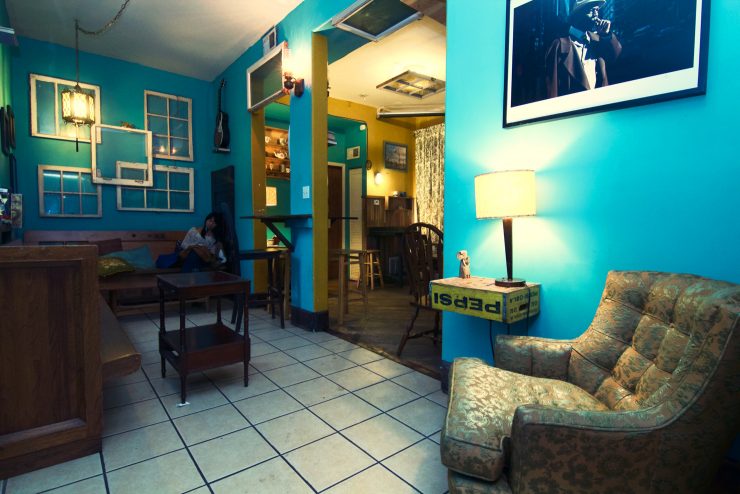
The espresso is pulled on the only Slayer in the city, and a wooden placard beside a dedicated brew bar details of the constantly rotating beans: origin, variety, and tasting notes are all listed, as well as the brew method on which it is offered (usually AeroPress or Clever). Also at the brew bar is their nitro coffee server on a stout tap. They take great pains with their setup and infusion process to insure that it maintains nitro’s unique characteristics, including the beautiful “coffee cascade” effect and beer-like head. Though Taylor used to roast in-store, this now takes place a few doors down, where cuppings have also relocated. There are still lines out the door at peak hours, but the roasters are no longer weaving their way through the line to tend to the beans.
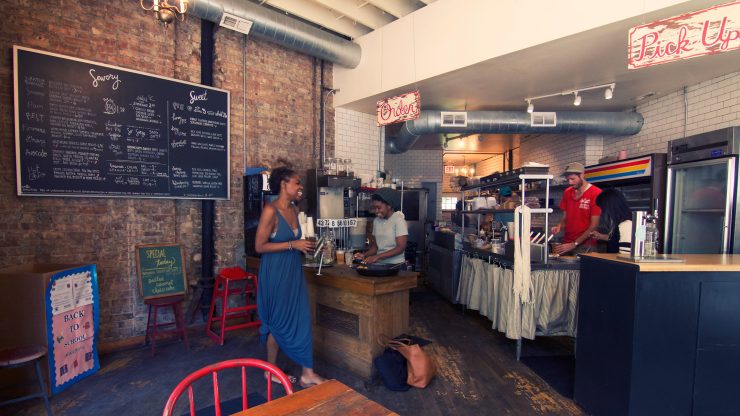
Bang Bang Pie & Biscuits
California Avenue Access Point
Back on The 606 and continuing west, Bang Bang Pie Shop beckons from the California exit. Started as a food truck by husband and wife Dave and Megan Miller, they filled Logan Square residents’ hunger for pies during evening commutes. It quickly became clear that there was demand for a physical location, and they moved into a triangular storefront at the south end of the neighborhood. The shop’s cachet rose rapidly among a surprisingly crowded local pie field, but after two successful years, the Millers decided to move on, selling the business to partner Michael Ciapciak. Fortunately, the pie shop has remained faithful to the original.
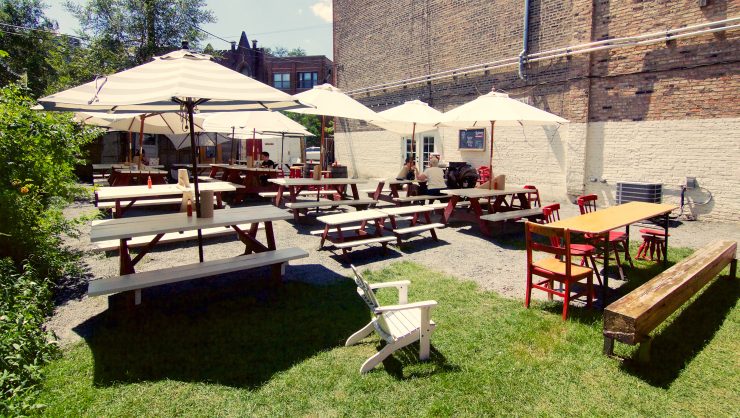 Bang Bang Pie feels like a rustic country pie shack that’s been transplanted into an urban neighborhood. There’s an open kitchen where everyone is deep into the baking, distressed wood trim everywhere, and seemingly random gothic-style chandeliers hanging from a high ceiling. French doors lead to a “pie garden”: a backyard with umbrella’d picnic tables. Communal seating is encouraged. And the pie menu offers a well-rounded set of daily selections that rotates often. As a rule, coffee must accompany pie.
Bang Bang Pie feels like a rustic country pie shack that’s been transplanted into an urban neighborhood. There’s an open kitchen where everyone is deep into the baking, distressed wood trim everywhere, and seemingly random gothic-style chandeliers hanging from a high ceiling. French doors lead to a “pie garden”: a backyard with umbrella’d picnic tables. Communal seating is encouraged. And the pie menu offers a well-rounded set of daily selections that rotates often. As a rule, coffee must accompany pie.
Bang Bang Pie uses Gaslight Coffee, roasted just down the street. Working together, they’ve come up with a custom roast (usually focused around Central America) to fit their pies’ style. A heavy mouthfeel and flavors towards the darker end of the spectrum (brown sugar, mild currant, chocolate, very low acidity) results in a coffee that sits well with a broad spectrum of sweet to more savory pies. I still prefer hot coffee in the middle of summer, but they also offer an iced CO2 tap version of their coffee. “I drink it all day long,” professes head chef Patrick Cloud. “I think it’s some of the best in the city.”
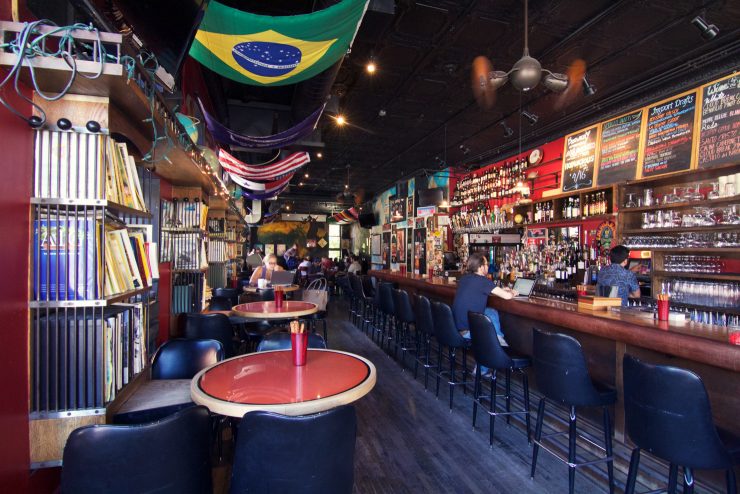
The Map Room
Park 567 (Milwaukee/Leavitt (2200W) Access Point
Heading home, I retrace my steps on The 606 and exit at Leavitt, swinging by one last stop. The Map Room is one of the most well-regarded beer bars in Chicago—the taps are curated by folks with encyclopedic beer knowledge, their Twitter feed announces whenever anything new’s been tapped, and they’ve got cask-conditioned ales on manual hand pumps. But Map Room’s best kept secret is that during the day it’s a marvelously quiet neighborhood bar. For 15 years they’ve opened at 6:30AM on weekdays, but they don’t cater to third-shifters as they don’t serve alcohol until 11AM. So what do they serve? Coffee, of course.
If you look behind the bar there’s a two-group VBM espresso machine and a FETCO. All the bartenders can pull shots…and they’ll do it at night too. Beans of choice? They come from a longstanding relationship with Intelligentsia, one of the city’s first specialty roasters. In a nod to modern coffee tastes and the fact that Chicago commonly entertains 90 degree days, they’ve been cold brewing as well. They also offer bagels, muffins, and various small breakfast foods from nearby Goddess & The Grocer.
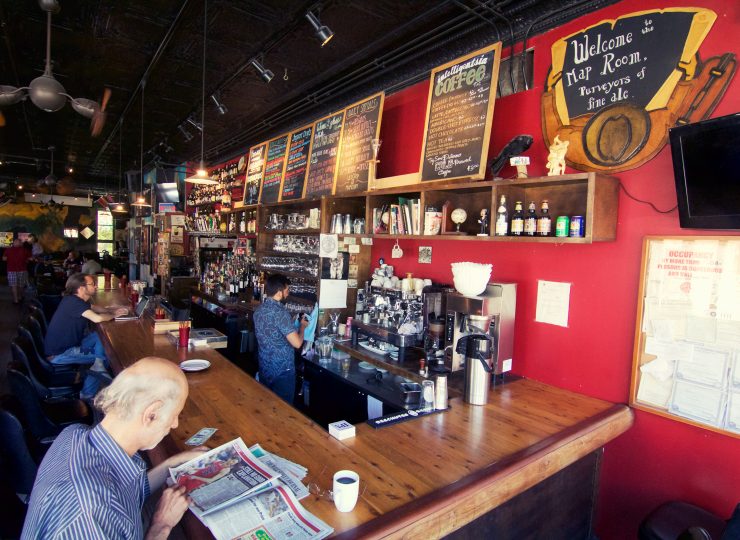
Now, there are a lot of bars that, when exposed to daylight, look dingy, smell like stale beer, and have a tendency to develop sticky floors. Map Room is none of these things. There’s plenty of sunlight, especially when they throw open the large front windows. All the tabletops are sparkling, there’s plenty of room to spread out, and tons of people are poking away at laptops and using the free Wi-Fi. On a recent visit, the barista/bartender was playing the 1950s Faye Adams’ recording of “Hurts Me To My Heart,” and there among the stacks of National Geographics, various world flags, and wall-sized maps, it all paired gloriously with my bottomless coffee.
Sadly, as you head further west on The Bloomingdale Trail, you run out of specialty coffee spots. Part of that is due to the zoning, focusing more on residential areas, but there’s also an economic factor at play. One of the biggest benefits of the trail is increased economic development all along its path—the uptick in housing values along the trail was shockingly quick. Hopefully as the 606 draws development further west, more coffee places will show up. I’ve already heard rumors of one opening relatively soon…
Joselito Tagarao is a freelance journalist based in Chicago. Read more Joselito Tagarao on Sprudge.






